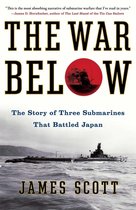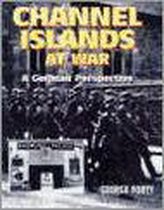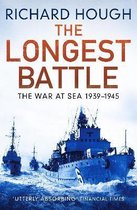The Most Dangerous Moment of the War Japan's Attack on the Indian Ocean, 1942
Afbeeldingen
Sla de afbeeldingen overArtikel vergelijken
Auteur:
John Clancy
- Engels
- Paperback
- 9781612005331
- 11 oktober 2017
- 208 pagina's
Samenvatting
A gripping account of Japan's great raid on the Indian Ocean in 1942, when seemingly unstoppable, they advanced on Ceylon (now Sri Lanka), an action that could have threatened wholesale defeat for the British, and which Churchill described as ‘the most dangerous moment of the war'.
‘The kind of story you'd find in illustrated form in one of the 1960s boys' comics such as Warlord, or Commando. Absolutely enthralling.’
Books Monthly
‘It is an interesting story . . . and I recommend it.’
The Mariner's Mirror
In early April 1942, a little-known chapter of World War II took place, said by Sir Winston Churchill to be ‘the most dangerous moment of the war' when the Japanese made their only major offensive westwards into the Indian Ocean. As historian Sir Arthur Bryant said, ‘A Japanese naval victory in April 1942 would have given Japan total control of the Indian Ocean, isolated the Middle East and brought down the Churchill government'.
War in the Far East had erupted with the attack on Pearl Harbor on 7 December 1941 and it appeared that the British naval bases at Ceylon would be next. The Japanese had a vast new coastline to defend, stretching from New Guinea to Northern Burma, and having destroyed the American fleet at Pearl Harbor, could not accept the threat of the British Eastern Fleet based at Ceylon. Occupation of Ceylon was vital as it was a springboard into India. Without control of Ceylon, essential convoys from India to Europe and the Western Desert would be in constant danger and Allied naval strength in the Far East was at a dangerously low level.
With the Japanese forces seeming unstoppable, the Indian Ocean lay open and undefended. So far the Japanese had suffered no significant losses and the offensive continued unabated as they steamed westward, unopposed. It was generally felt Ceylon would be next to fall. It was a situation that could not be allowed to happen but the question on everyone's lips was how soon would Japan take advantage of this strategic situation.
After the war Churchill acknowledged that the potential disaster at Ceylon had been averted by the brave actions of one pilot, Squadron Leader L. J. Birchall, who while flying his Catalina flying boat on a regular patrol, spotted the Japanese warships massing some 350 miles from Ceylon. He was spotted by the Japanese whose aircraft shot him down but before so doing, Birchall sent a brief radio message back to his base. This gave the island's defence forces sufficient time to prepare for the attack and to disperse the British fleet out to sea. Churchill acknowledged this pilot had made one of the most important single contributions to our victory.
John Clancy tells the story of the events of this dramatic but little known episode in which a major catastrophe was only narrowly averted, but in which over a thousand mainly British lives were lost, including the sinking of HMS Cornwall and HMS Dorsetshire.
‘The kind of story you'd find in illustrated form in one of the 1960s boys' comics such as Warlord, or Commando. Absolutely enthralling.’
Books Monthly
‘It is an interesting story . . . and I recommend it.’
The Mariner's Mirror
In early April 1942, a little-known chapter of World War II took place, said by Sir Winston Churchill to be ‘the most dangerous moment of the war' when the Japanese made their only major offensive westwards into the Indian Ocean. As historian Sir Arthur Bryant said, ‘A Japanese naval victory in April 1942 would have given Japan total control of the Indian Ocean, isolated the Middle East and brought down the Churchill government'.
War in the Far East had erupted with the attack on Pearl Harbor on 7 December 1941 and it appeared that the British naval bases at Ceylon would be next. The Japanese had a vast new coastline to defend, stretching from New Guinea to Northern Burma, and having destroyed the American fleet at Pearl Harbor, could not accept the threat of the British Eastern Fleet based at Ceylon. Occupation of Ceylon was vital as it was a springboard into India. Without control of Ceylon, essential convoys from India to Europe and the Western Desert would be in constant danger and Allied naval strength in the Far East was at a dangerously low level.
With the Japanese forces seeming unstoppable, the Indian Ocean lay open and undefended. So far the Japanese had suffered no significant losses and the offensive continued unabated as they steamed westward, unopposed. It was generally felt Ceylon would be next to fall. It was a situation that could not be allowed to happen but the question on everyone's lips was how soon would Japan take advantage of this strategic situation.
After the war Churchill acknowledged that the potential disaster at Ceylon had been averted by the brave actions of one pilot, Squadron Leader L. J. Birchall, who while flying his Catalina flying boat on a regular patrol, spotted the Japanese warships massing some 350 miles from Ceylon. He was spotted by the Japanese whose aircraft shot him down but before so doing, Birchall sent a brief radio message back to his base. This gave the island's defence forces sufficient time to prepare for the attack and to disperse the British fleet out to sea. Churchill acknowledged this pilot had made one of the most important single contributions to our victory.
John Clancy tells the story of the events of this dramatic but little known episode in which a major catastrophe was only narrowly averted, but in which over a thousand mainly British lives were lost, including the sinking of HMS Cornwall and HMS Dorsetshire.
Productspecificaties
Wij vonden geen specificaties voor jouw zoekopdracht '{SEARCH}'.
Inhoud
- Taal
- en
- Bindwijze
- Paperback
- Oorspronkelijke releasedatum
- 11 oktober 2017
- Aantal pagina's
- 208
- Illustraties
- Nee
Betrokkenen
- Hoofdauteur
- John Clancy
- Hoofduitgeverij
- Onbekend
Overige kenmerken
- Extra groot lettertype
- Nee
- Product breedte
- 152 mm
- Product lengte
- 229 mm
- Studieboek
- Nee
- Verpakking breedte
- 152 mm
- Verpakking hoogte
- 229 mm
- Verpakking lengte
- 229 mm
- Verpakkingsgewicht
- 132 g
EAN
- EAN
- 9781612005331
Kies gewenste uitvoering
Kies je bindwijze
(2)
Prijsinformatie en bestellen
De prijs van dit product is 13 euro en 95 cent.
Op voorraad
Voor 15:00 uur besteld, donderdag in huis
Verkoop door
Barksdale Books
- Bestellen en betalen via bol
- Prijs inclusief verzendkosten, verstuurd door Barksdale Books
- Ophalen bij een bol afhaalpunt mogelijk
- 30 dagen bedenktijd en gratis retourneren
- Wettelijke garantie via Barksdale Books
Rapporteer dit artikel
Je wilt melding doen van illegale inhoud over dit artikel:
- Ik wil melding doen als klant
- Ik wil melding doen als autoriteit of trusted flagger
- Ik wil melding doen als partner
- Ik wil melding doen als merkhouder
Geen klant, autoriteit, trusted flagger, merkhouder of partner? Gebruik dan onderstaande link om melding te doen.








